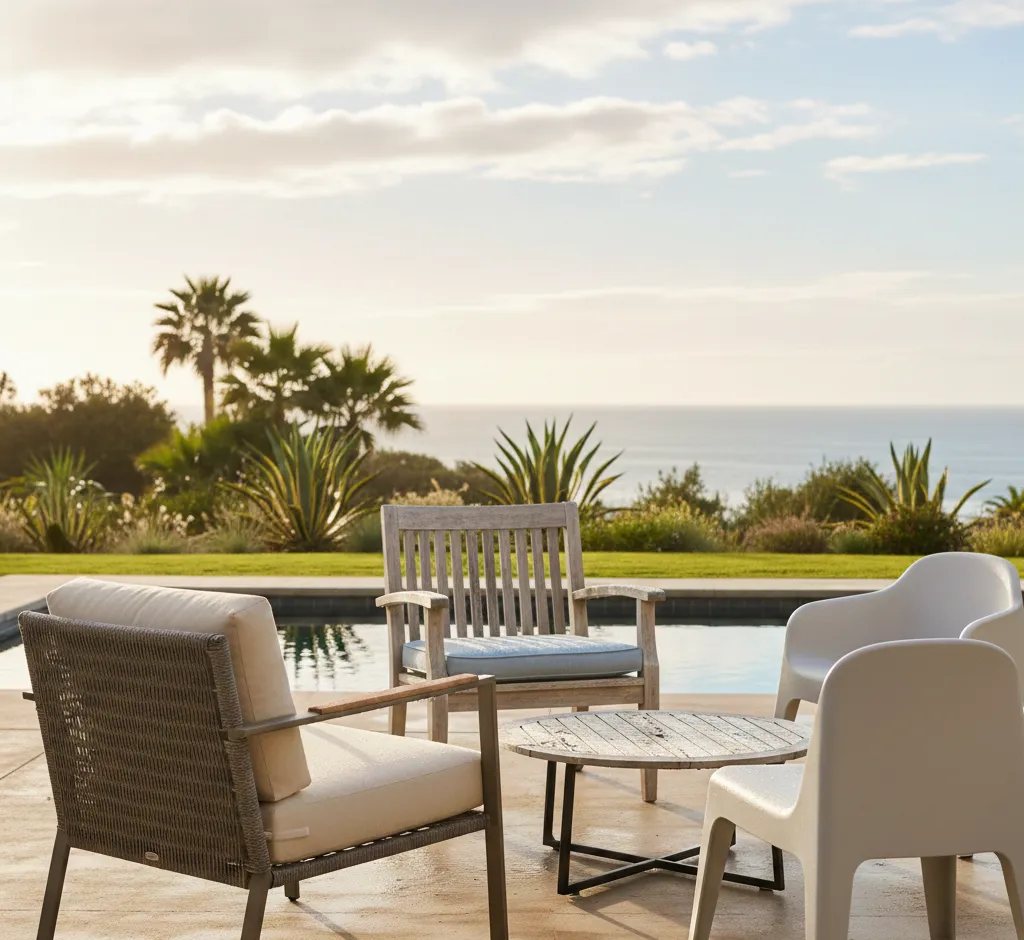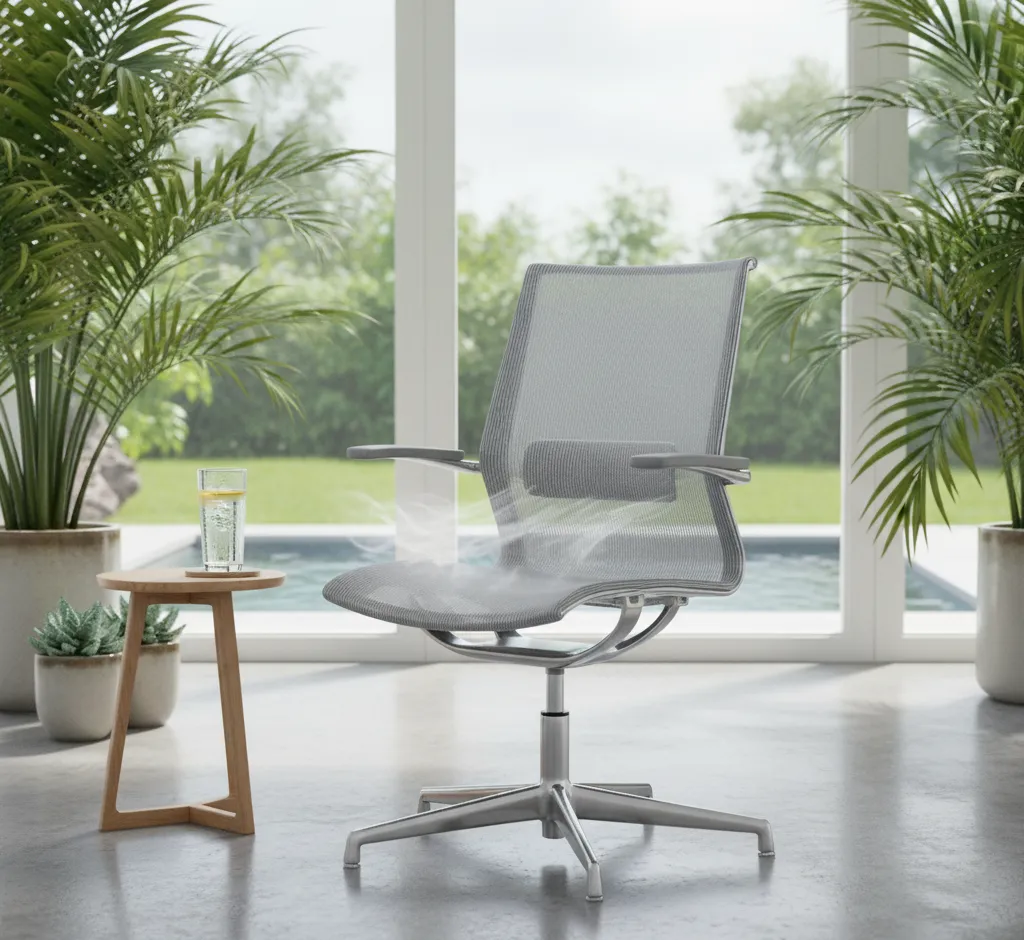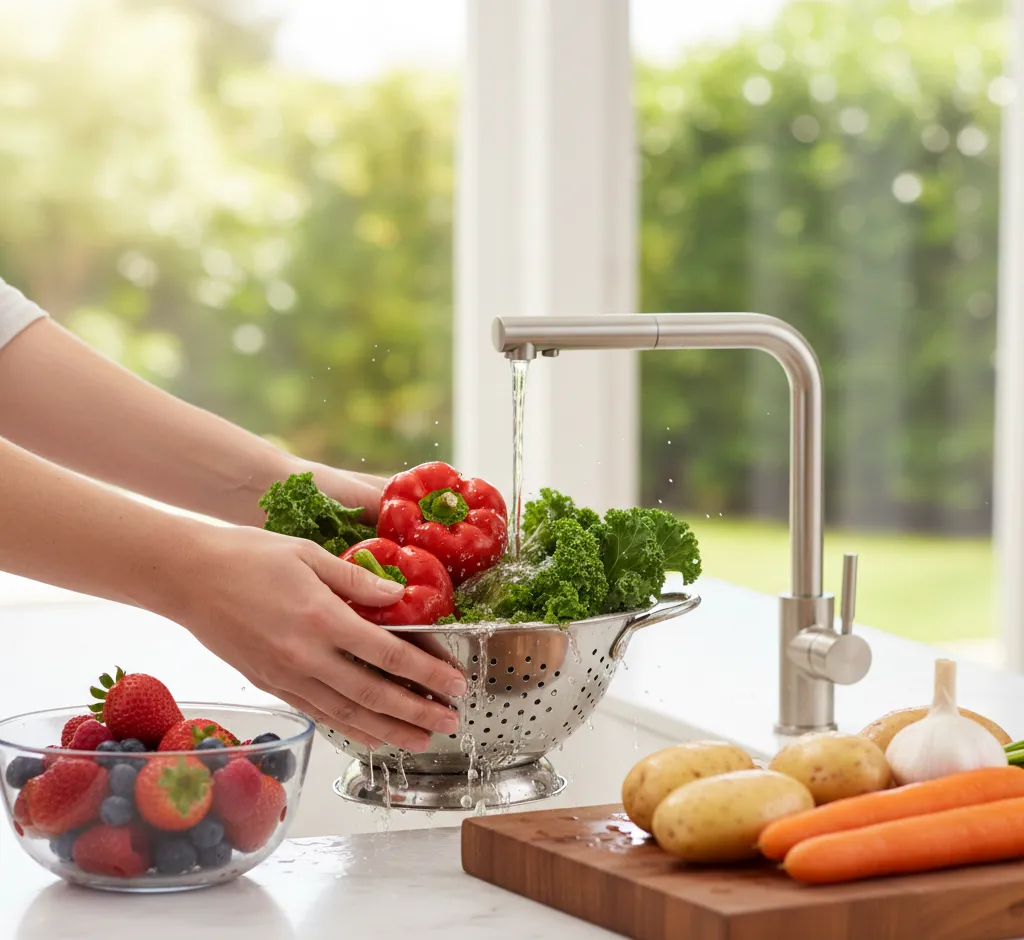The Ultimate Guide to Weather-Resistant Outdoor Chair Materials
Discover the best weather-resistant chair materials, including teak, aluminum, stainless steel, and HDPE resin, to ensure your outdoor furniture lasts for years with minimal maintenance.

🛋️ The Foundation of Lasting Outdoor Comfort
Choosing the right outdoor furniture is about more than just aesthetics; it's an investment in **durability and longevity**. When selecting chairs, the material is the single most critical factor determining how well they will withstand the sun, rain, temperature fluctuations, and general wear and tear of the outdoors. The perfect weather-resistant chair material strikes a balance between beauty, comfort, and minimal maintenance. Understanding the pros and cons of the most popular options will guide you to the best purchase for your specific climate and lifestyle.
💧 Superior Metal Options: Aluminum and Stainless Steel
Metal furniture offers a sleek, modern look and excellent strength, but not all metals are equal in the face of the elements.
- Aluminum: **Lightweight, rust-proof, and low maintenance**. This is perhaps the most popular material for modern outdoor furniture. High-quality aluminum frames are often powder-coated, which adds a layer of protection against scratching and fading. It's an excellent choice for coastal areas where salt air is a concern because it simply doesn't rust.
- Stainless Steel: Extremely strong and resistant to corrosion, stainless steel is ideal for high-end, contemporary designs. However, it's crucial to look for marine-grade (316) or at least 304-grade stainless steel, as cheaper grades can still develop 'tea staining' (surface rust) when exposed to high moisture or salt.
Tip: Always check if the hardware (screws, bolts) is made from the same grade of rust-resistant metal to prevent weak points.
🌿 Natural and Composite Woods: The Classic Choice
Wood provides a timeless, warm aesthetic, but requires different levels of care depending on the type.
- Teak: The gold standard for natural weather resistance. Teak wood contains natural oils and a high rubber content that make it impervious to rot, pests, and extreme weather. It naturally ages to a beautiful, silvery-gray patina (weathering) but can be maintained with periodic oiling if you prefer the original honey-brown color. **It requires minimal effort to last decades.**
- Eucalyptus and Acacia: These are more budget-friendly hardwoods that offer good natural resistance. They typically require more frequent maintenance (oiling) than teak to prevent drying out, cracking, and excessive fading.
- Faux/Composite Wood (Polywood/Resin): Often made from recycled plastics, these materials mimic the look of painted wood without any of the maintenance. They are **100% waterproof, fade-resistant, and won't splinter, crack, or rot**. This is an exceptionally durable choice for harsh conditions.
| Material | Weather Resistance | Maintenance Level | Coastal Friendly |
|---|---|---|---|
| Aluminum | Excellent | Low | Yes |
| Teak Wood | Superior | Minimal (Ages Gracefully) | Yes |
| High-Density Polyethylene (HDPE) | Excellent (Zero Maintenance) | Very Low | Yes |
| Wrought Iron | Good (Requires Rust Treatment) | Medium | No (Prone to Rust) |
🧪 High-Tech Synthetics: The Future of Durability
Modern technology has introduced synthetic materials that are engineered specifically for the rigors of outdoor life.
- Resin Wicker (HDPE): This is not the brittle, vinyl wicker of the past. High-Density Polyethylene (HDPE) resin wicker is woven over an aluminum frame and is incredibly tough. It is **UV-resistant, colorfast, and completely waterproof**, making it resistant to mold and mildew. It's lightweight and comfortable without cushions.
- Polypropylene/Fiberglass: Often used for stackable, molded chairs, this plastic composite is inexpensive, exceptionally durable, and comes in a huge range of colors. It won't fade or crack easily and is often used in commercial or heavy-traffic settings.
⚠️ A Note on Upholstery and Finishes
No matter how durable the frame is, the accompanying cushions and slings must also be weather-resistant. Look for fabrics like **Solution-Dyed Acrylic (e.g., Sunbrella)**, which resists fading and is easy to clean. Similarly, metal frames should always have a high-quality powder-coat finish to seal the material and prevent premature degradation.
Ultimately, the best weather-resistant chair material for you depends on your budget and how much time you are willing to spend on upkeep. For **zero maintenance and maximum longevity**, composite materials or powder-coated aluminum are excellent choices. For a **classic, natural look with minimal upkeep**, investing in high-quality teak is unbeatable.


